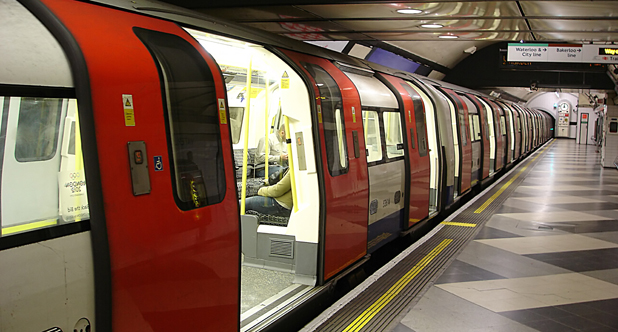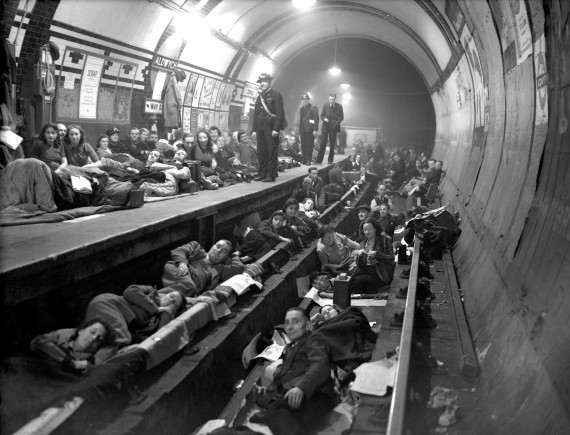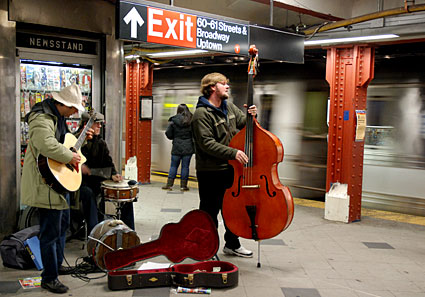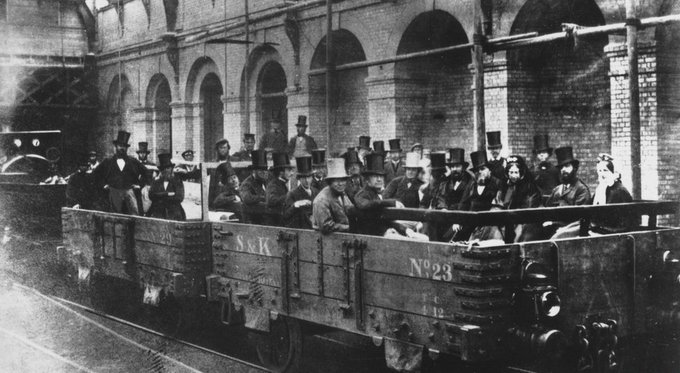Is this some sort of hinterland? Underneath the great Metropolis, lies a sprawling network of tunnels and underground passageways. An escalator often takes you into the deep belly of the city where passers-by rarely make eye contact. No, it's the underground or 'Tube', the world's oldest underground railway (parts of it first opened in 1863), which serves 270 stations and has 250 miles of track. Today it consists of 11 different lines, and carries over a billion passengers a year. None of this explains the lack of eye contact, which probably has more to do with the Londoner mentality than the Tube itself.
Proposals for the Tube were made in the 1830's; the idea was to link the City of London (still London's professional working district) with the main railway termini in the city's centre. Thus it was the Metropolitan railway (from which the Metropolitan line takes its name) that was given permission to build such a line in 1854, between Paddington and Farringdon in the city. These first trains were composed of gas-lit wooden carriages that were pulled by steam locomotives. On its first day open it carried 38,000 passengers which was considered a great success. It even required other trains to be borrowed from other railways to ensure that the service had enough space. So, right from its advent the Tube has been implicitly tied to notions of being packed. Not much change there.

In its 150 year history, WW2 has provided the Underground with some of its most vivid images. Images of people sheltering in London Underground stations during the Blitz were a reminder of the city's fortitude in the face of the most dangerous assault ever suffered. Winston Churchill is famously known to have said that "London is like some huge prehistoric animal, capable of enduring terrible injuries, mangled and bleeding from many wounds, and yet preserving its life and movement."
This metaphor connotes the internal structure of the urban landscape – its veins and arteries – with the underground railway passages not only sheltering civilians but also continuing to serve the thousands of people who needed to travel safely around the city. Despite the inevitable delays and disruptions due to bombing, the Tube was nevertheless kept running, maintaining the necessary commerce and industry across the city.

London's Underground might be the oldest, but it's not the biggest 'rapid transit' system in the world. That would be New York's subway, which has 468 operating stations, with the first line opening in 1904. Unlike the Tube, New York's subway runs 24 hours a day, seven days a week. It also has a number of unique features – on one special day in the year, you might be surprised to see a number of people riding the train with no trousers on. This is not a new fashion – it is The No Pants Subway Ride, which has been offering bare legs to the city since its creation in 2002. The idea is that random passengers board a subway car at various stops in the middle of winter, wearing no trousers. They act as though they don't know one another, and are otherwise attired normally in scarves, hats, coats, and shoes. It is their lack of trousers that brings them together.
Another phenomenon that you have probably encountered on one of many underground railways is music – no, not the irritating buzz from someone else's MP3 player, but actual live music. The Tube is an ideal place for buskers to play, as it is not too cold in the winter, and there is a constant flow of audience. Indeed, Transport for London encourage buskers with their Busking Scheme, which gives musicians the opportunity to play in notable spots with a licence. The lure of playing on the Tube from time to time also attracts big names, such as the famous indie bands The Libertines, Badly Drawn Boy, and Seasick Steve. Not to mention the masses of unsigned and free talent on show, from jazz to classical to rock, the Underground's got it all.

